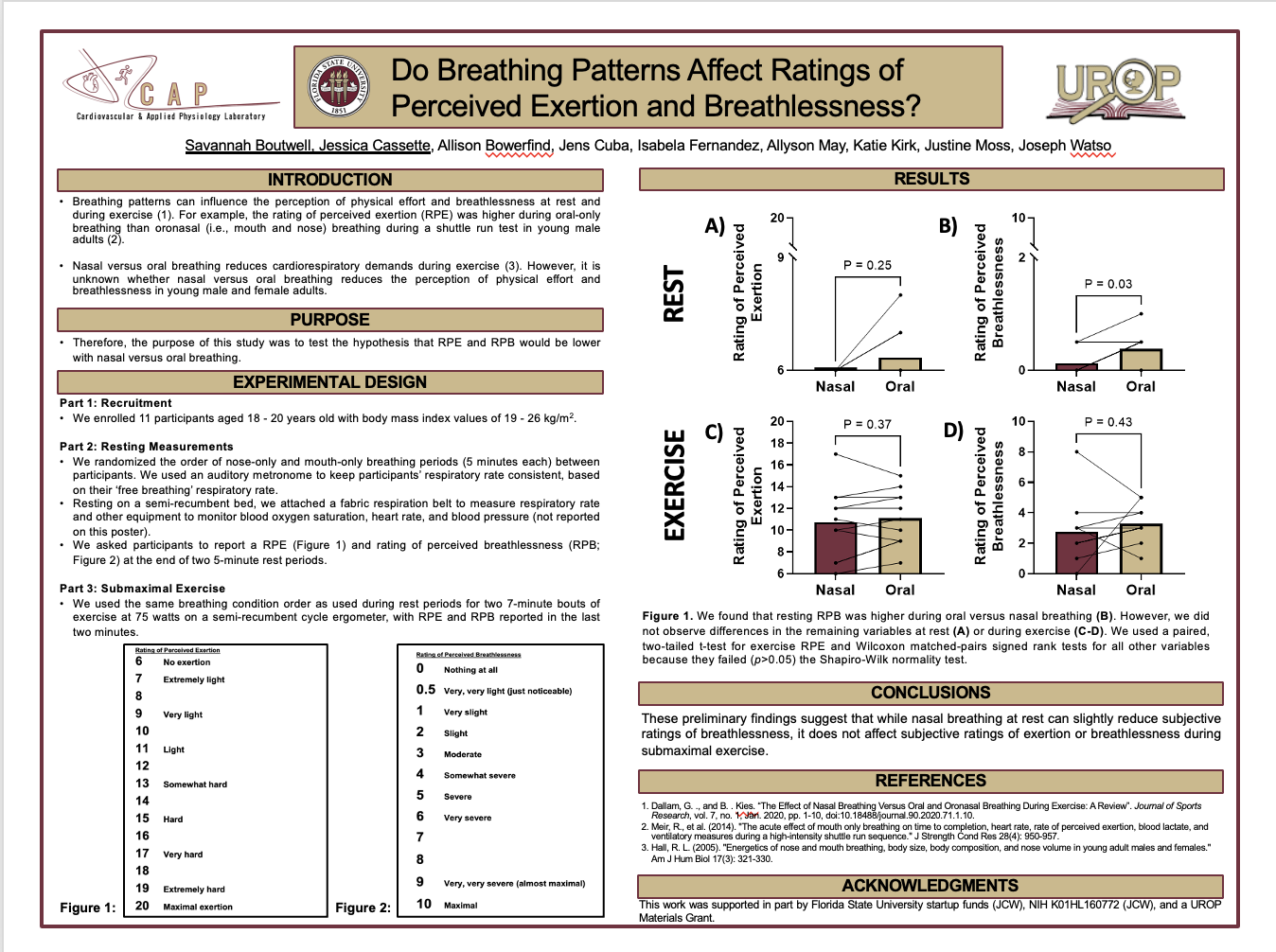Research Symposium
23rd annual Undergraduate Research Symposium, April 6, 2023
Jessica Cassette Poster Session 3: 2:45 pm - 3:45 pm/ Poster #296
BIO
Growing up in Jacksonville, Florida, I attended an arts magnet program for both middle and high school that ignited my passion for the arts and sciences. As an artist and scientist, I aim to investigate how the integration of these two fields can provide fresh insights into the world we inhabit. Currently, I am a sophomore pursuing a Bachelor of Fine Arts degree in dance, on the academic path toward a Doctorate in Physical Therapy (DPT) so that I may specialize in treating professional athletes. Along with this, I aspire to conduct clinical research studies that can aid in the development of innovative injury recovery and prevention techniques.
Do Breathing Patterns Affect Ratings of Perceived Exertion and Breathlessness?
Authors: Jessica Cassette, Joseph WatsoStudent Major: Dance
Mentor: Joseph Watso
Mentor's Department: Nutrition & Integrative Physiology Mentor's College: Health & Human Sciences Co-Presenters: Savannah Boutwell
Abstract
Breathing patterns influence the perception of physical effort and breathlessness. Nasal breathing can calm the nervous system, but it is unknown whether nasal versus oral breathing affects the rating of perceived exertion (RPE) or the rating of perceived breathlessness (RPB). Purpose: Therefore, we tested the hypothesis that RPE and RPB would be lower with nasal versus oral breathing at rest and during exercise. Methods: We tested 11 participants aged 18-20 years old with body mass index values of 19 - 26 kg/m2. We asked participants to report an RPE (6-20 scale; no exertion to maximal exertion) and RPB (1-10 scale; none to maximal breathlessness) for two 5-minute rest periods and two 7-minute exercise periods (75 watts on a semi-recumbent cycle). We randomized the order of nose-only and mouth-only breathing between participants. We conducted two-tailed, paired t-tests to determine whether breathing patterns affect RPE or RPB. Results: We found that at rest, breathing patterns did not affect RPE (Nose: 6.10 ± 0.10 vs. Mouth: 6.50 ± 0.22, p=0.104), but did affect RPB (Nose: 0.05 +/- 0.05 vs. Mouth: 0.35 ± 0.11, p=0.005). However, during submaximal exercise, we found that breathing patterns did not affect either RPE (Nose: 11.11 ± 1.01 vs. Mouth: 11.00 ± 0.67, p=0.88) or RPB (Nose: 2.75 ± 0.86 vs. Mouth: 3.00 ± 0.38, p=0.83). Conclusions: These preliminary findings suggest that while nasal breathing at rest can reduce subjective ratings of breathlessness, it does not affect subjective ratings of effort or breathlessness during submaximal exercise.
Keywords: health, cardiovascular health, human sciences


